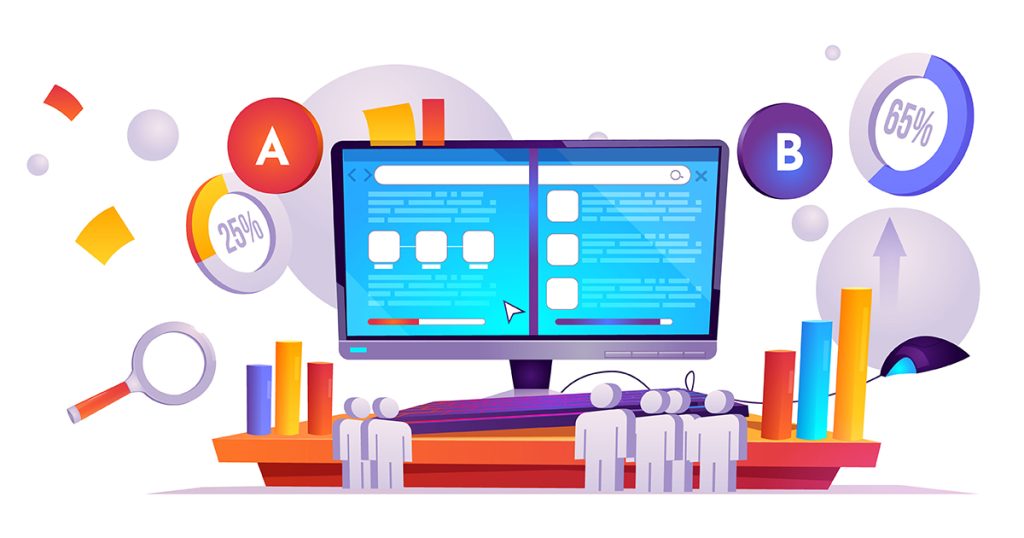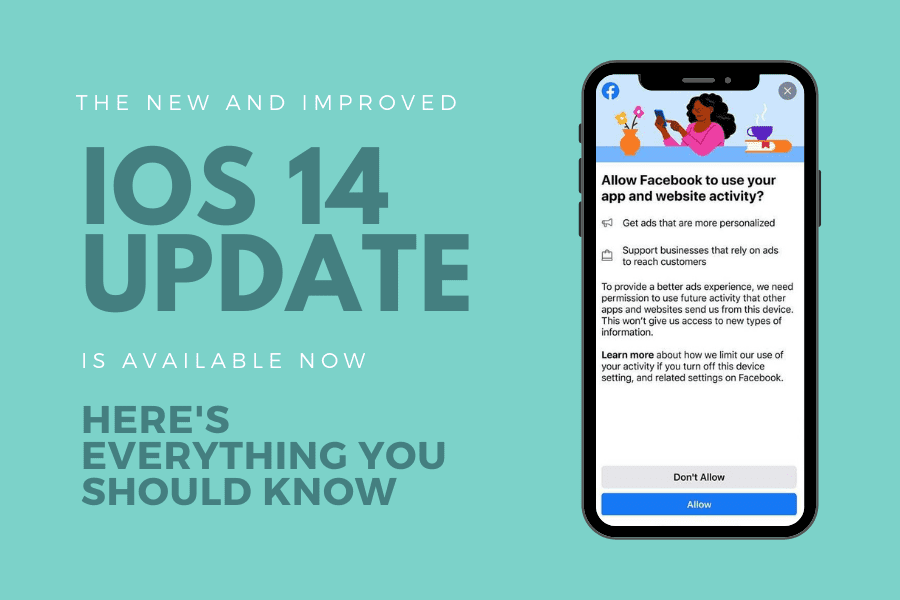Google Analytics 4 is the latest version of Google’s analytics tool designed to help you understand user behavior on your website. While it comes with advanced features that offer deep insights, it can be challenging to navigate, especially for small businesses without a dedicated tech team.
But GA4 is not just about challenges; it also offers new opportunities, particularly in the area of Search Engine Optimization (SEO). SEO is essential for improving your website’s ranking on search engines like Google, which in turn can help you attract more visitors.
In this blog, we’ll explore how GA4 and SEO can complement each other to help you achieve your digital marketing goals. We’ll discuss how GA4 can provide valuable data to refine your SEO strategies, measure their effectiveness, and ultimately help you make more informed business decisions. If you’re looking to improve your website’s performance and reach a wider audience, this blog is for you.
If it seems too complicated, we can help. We’re experts in GA4 at Goodish. To see how we can help you, check out our services here.
Table of Contents
1. Real-Time Data: Immediate Insights for SEO
2. Event Tracking: Understanding User Actions for Better SEO
3. Integration with Google Search Console
4. Improved Reporting: Make Informed Decisions for Better SEO
5. User-Centric Approach
6. Understanding Future Trends with Smart Tools
7. Creating More Focused Marketing Campaigns
8. Custom Events and Metrics
9. Data Retention
10. Tracking Across Different Websites and Platforms
11. Understanding User Paths with Funnel Analysis
12. Page Scroll Tracking
13. Bounce Rate Alternatives
14. Conclusion
Real-Time Data: Immediate Insights for SEO
Google Analytics 4 (GA4) gives you real-time data, which is great for improving your website’s SEO. As soon as you make a change to your website or post new content, you can see right away how it’s affecting your traffic and how people are interacting with your site.

For example, if you add new keywords to a page, you can quickly see if they’re helping to bring in more visitors. If not, you can make fast changes to try something else. This is especially useful for short-term campaigns or special promotions. You can see right away if they’re working and make quick adjustments if needed.
GA4’s real-time data helps you make fast, informed decisions to improve your website and climb higher in search engine rankings.
Event Tracking: Understanding User Actions for Better SEO
One of the cool features of Google Analytics 4 (GA4) is its advanced event tracking. This means it lets you see in detail what actions people are taking on your website. For example, you can track when someone clicks a button, fills out a form, or even how long they watch a video on your site.
Why is this important for SEO? Because search engines like Google care a lot about user experience. If people find what they’re looking for on your site and have a good time doing it, that’s a big plus for your SEO.
This way you can see exactly what’s making your visitors happy or frustrated. If you notice that a lot of people are clicking on a certain button but then leaving the page, that’s a clue that something might be wrong there. Maybe the button isn’t working, or perhaps it’s not leading to the content people expect.
By understanding these user actions, you can make improvements to your website. And a better user experience can lead to higher search engine rankings.
Integration with Google Search Console
One of the best things you can do for your website’s SEO is to use multiple tools that help you understand how you’re doing. Google Search Console is one such tool that gives you a lot of useful information, like which search terms are bringing people to your site. But wouldn’t it be great if you could see all this information in one place?
That’s where the integration with Google Search Console comes in. By connecting it with GA4, you can have all your SEO data centralized in one dashboard. This makes it much easier to understand how your website is performing in search results and what you can do to improve it.
For example, you can see how many people clicked on your website from search results and what pages they visited once they got there. You can also find out if there are any issues with your website that might be hurting your search ranking, like slow loading times or broken links.
Having all this data in one place saves you time and effort. You won’t have to jump between different tools to get a full picture of your SEO performance. This makes it easier to spot trends, fix issues, and ultimately improve your website’s visibility in search results.
Improved Reporting: Make Informed Decisions for Better SEO
When it comes to making your website more visible in search results, having detailed reports can make a big difference. Advanced reporting features give you a closer look at how your website appears when people search online.
Knowing more about how your website is performing allows you to make better choices to improve its SEO. For example, you can find out which search terms are bringing in the most visitors. Is it “best coffee shop in town” or “organic coffee near me”? This information helps you focus your efforts better.
You can also learn how well individual pages on your site are doing. Maybe one of your blog posts is getting a lot of visitors, while another isn’t. With detailed reports, you can understand why this is happening. It might be that the popular post uses better keywords or has links from trusted sites.
Advanced reporting gives you the detailed information you need to make smart choices. Instead of guessing what might improve your SEO, you can make plans based on real data. This helps you improve your chances of showing up higher in search results.
User-Centric Approach
One of the great things about GA4 is that it’s designed to track how people interact with your website across different devices like phones, tablets, and computers. This means you get a fuller understanding of how someone moves through your site, from the moment they first visit to when they make a purchase or sign up for your newsletter.

This useful for improving your website’s search ranking because search engines like Google care a lot about user experience. They want to show websites that people find helpful and easy to use. By understanding the complete customer journey, you can make changes to your website that make it more user-friendly. This could mean simplifying the checkout process, making your site faster, or making sure it looks good on mobile devices.
So, instead of just seeing a snapshot of user behavior, you get the whole picture. This allows you to make smarter decisions that can help your website show up higher in search results.
Understanding Future Trends with Smart Tools
One exciting feature is the use of machine learning to give you predictive metrics. This means the system can make educated guesses about what your website visitors are likely to do in the future. For example, it can predict which products are most likely to be purchased or what type of content is likely to be most popular.
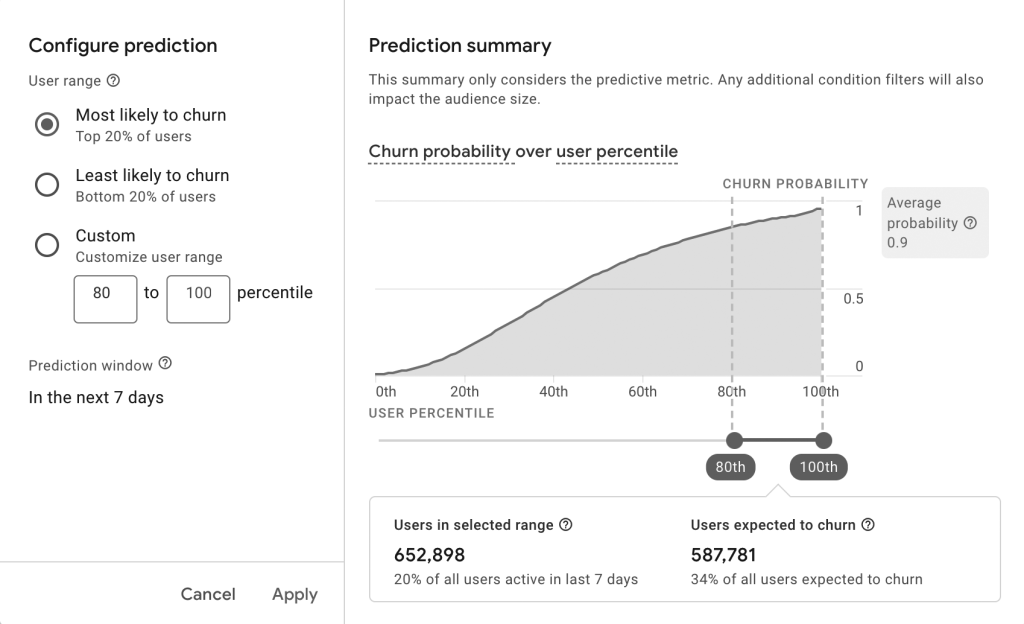
Source: Google
Knowing what your users are likely to do can help you plan your content and marketing strategies more effectively. Which can improve your website’s search ranking. If you know a particular product is likely to be popular, you can create content around it, like blog posts or videos, to attract more visitors.
Similarly, if you know what questions your audience is likely to have, you can create FAQ pages or how-to guides that answer those questions.
By being proactive and planning your content based on these predictions, you’re more likely to attract and keep visitors on your site.
Creating More Focused Marketing Campaigns
GA4 has some pretty advanced tools for building specific audiences. This meand that instead of sending the same marketing message to everyone, you can create different messages for different groups of people who visit your site.
For example, you could target visitors who have looked at a particular product but haven’t bought it yet.
When you can send more personalized messages, you’re more likely to attract visitors who are genuinely interested in what you have to offer. This means they’re more likely to stay on your site longer, click on more pages, and maybe even make a purchase.
All of these actions send positive signals to search engines like Google, which can help your website show up higher in search results.
Custom Events and Metrics
One of the great things about GA4 is that it lets you set up your own events and measurements that are directly related to what you want to achieve with your business. This means you can track exactly what matters most to you. For example, if you run an online store, you could set up an event to track every time someone adds a product to their cart.
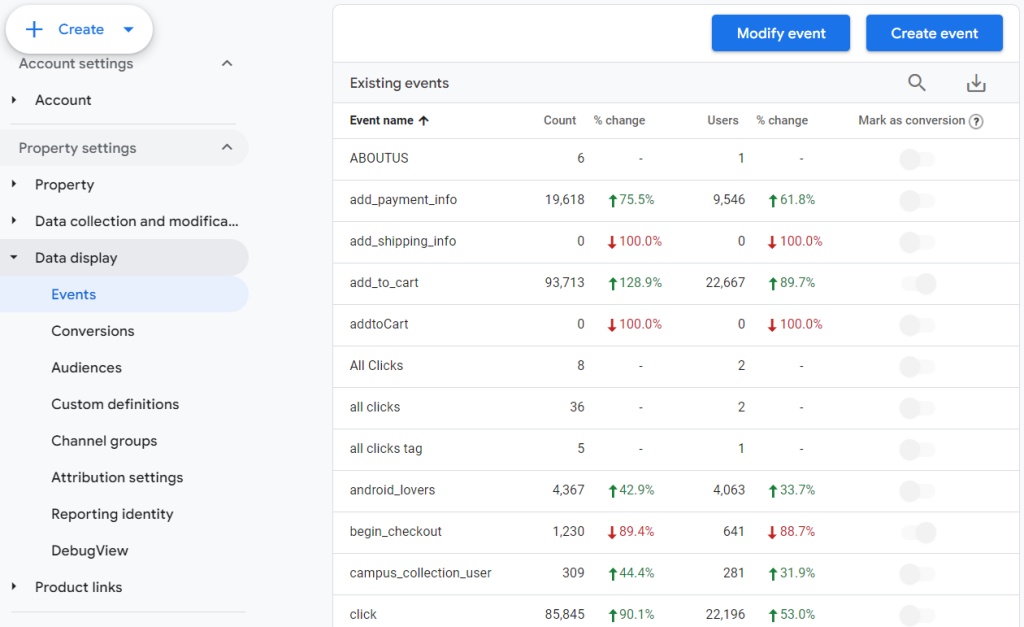
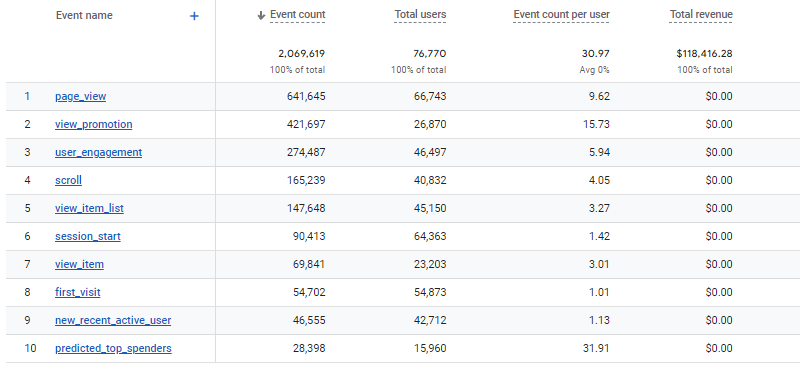
The more specific your data, the better you can understand what’s working and what’s not. If you know that a lot of people are adding a product to their cart but not completing the purchase, you might decide to make the checkout process simpler. Or maybe you’ll add more information about the product to help people make their decision.
By focusing on what’s most important to your business, you can make changes that not only improve the user experience but also make your site more attractive to search engines.
Data Retention
Although GA4 has some limits on how long it keeps your data, it does offer ways to look at long-term trends. This is really helpful for understanding how your website is doing over time, not just right now.
For example, you might notice that your website gets more visitors during the holiday season every year. Knowing this, you can prepare in advance by optimizing your website for holiday-related search terms.
Or maybe you find that a particular blog post continues to attract visitors months or even years after it was published. This could be a sign that the topic is evergreen and worth focusing on in your future content strategy.
Being able to look at long-term trends helps you make better decisions for your website’s search engine optimization. It allows you to see what’s consistently working so you can do more of it, and what’s not working so you can make improvements.
Tracking Across Different Websites and Platforms
With GA4, you can easily keep track of how people interact with your website even if they switch to another site or use different devices. This gives you a fuller picture of how well your website is doing in terms of search engine optimization.
For example, let’s say you have an online store and a separate blog. With GA4’s cross-domain tracking, you can see if a visitor reads a blog post and then goes on to make a purchase in your store. This kind of information is invaluable because it shows you the entire path a customer takes before making a decision.
Understanding this customer journey can help you figure out what’s working and what needs improvement. Maybe you find that people who read a certain blog post are more likely to make a purchase. In that case, you might decide to write more posts on similar topics or even link to those posts directly from your online store.
This comprehensive view allows you to make smarter decisions about how to optimize your website for search engines. You can see which parts of your online presence are most effective in attracting and converting visitors, and focus your efforts there.
Understanding User Paths with Funnel Analysis
Funnel analysis is all about tracking the steps a visitor takes on your website before they complete a specific action, like making a purchase or signing up for a newsletter. With GA4 you get a more detailed look at this process, which is super important for improving your website’s search engine ranking.
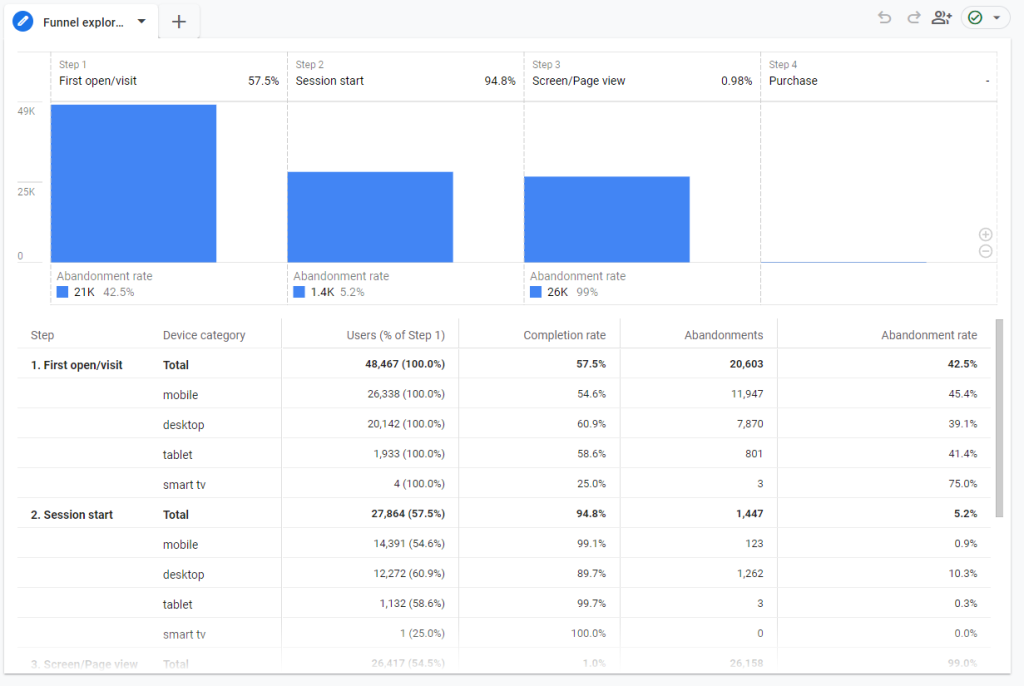
For example, you can set up a funnel to see how many people visit your homepage, then click on a product category, view a specific product, and finally make a purchase. If you notice that a lot of people are dropping off at the product view stage and not making it to the purchase, you know there’s something you need to fix. Maybe the product description is unclear, or perhaps the page takes too long to load.
By understanding where you’re losing visitors, you can make targeted improvements to keep them engaged and moving through your site. This not only helps with customer conversion but also sends positive signals to search engines, which can boost your site’s ranking.
Page Scroll Tracking
GA4 offers scroll tracking, which tells you how far down people are scrolling on your web pages. This gives you a good idea of whether your content is hitting the mark or not, and that’s a big deal for search engine ranking.
Let’s say you have a long blog post, and you find out that most visitors only scroll down about 25% of the page before leaving. This could mean that your introduction isn’t engaging enough to keep them reading, or maybe the content isn’t what they were expecting based on the title or search terms.
On the other hand, if you see that people are scrolling all the way to the end, that’s a good sign! It means your content is engaging and provides value, which search engines love to see. You can use this information to figure out what you’re doing right and apply it to other pages or posts.
Bounce Rate Alternatives
In the past, many people relied on something called “bounce rate“ to figure out if visitors found their website useful or not. A “bounce” happened when someone visited a page on your site and then left without doing anything else, like clicking a link or filling out a form. A high bounce rate was usually a bad sign, suggesting that your page didn’t offer what the visitor was looking for.
But now with GA4, there’s a new way to look at this. Instead of just tracking bounces, you can get a more detailed picture of how people are interacting with your site. This is important because search engines, like Google, want to show users the most helpful and relevant websites. The more you know about how people are actually using your site, the better you can make it, and the more likely it is to show up in search results.
For example, you can now see if people are watching videos on your site, or if they’re scrolling down the page to read more content. All of these actions show that the visitor is interested and engaged, which is a good sign for search engines.
Conclusion
We’ve explored a lot of ways to use Google Analytics 4 to make your website better. From getting data right away to tracking what people do on your site, this tool offers a lot of useful features. These features can help you understand what’s working and what needs improvement on your website. The goal is to make your website show up more often in search results, like when people search on Google.
But it’s not just about the data. It’s about making your website a place people want to visit. By understanding how people use your site, you can make it easier and more enjoyable for them. This can help your website rank higher in search results.
Whether you’re a small business owner or part of a larger team, using this tool can help you make more informed decisions. All in all, it’s about creating a better online experience for everyone.
We at Goodish agency are experts in digital marketing and we can help you to utilize AI to reduce your costs and boost your performance. Read more about our services.





